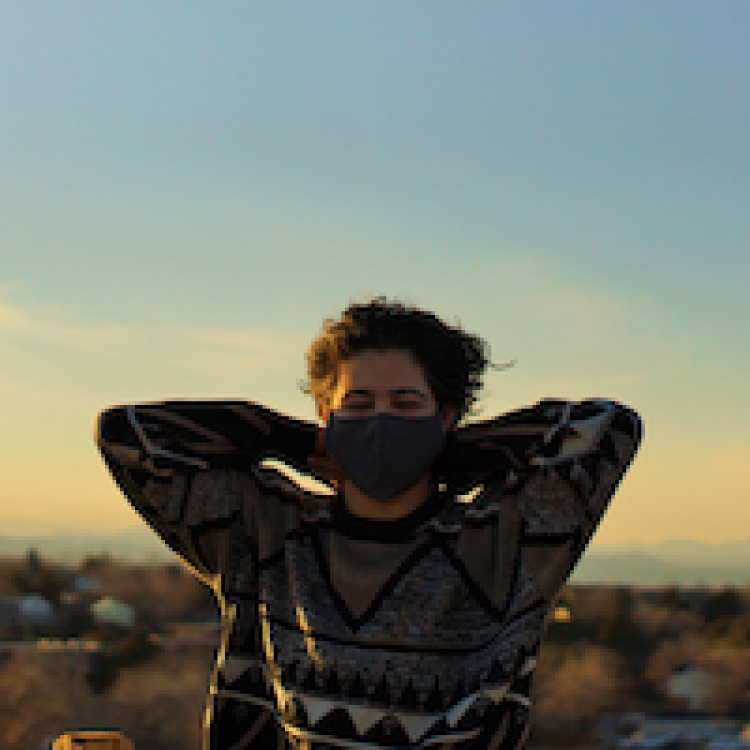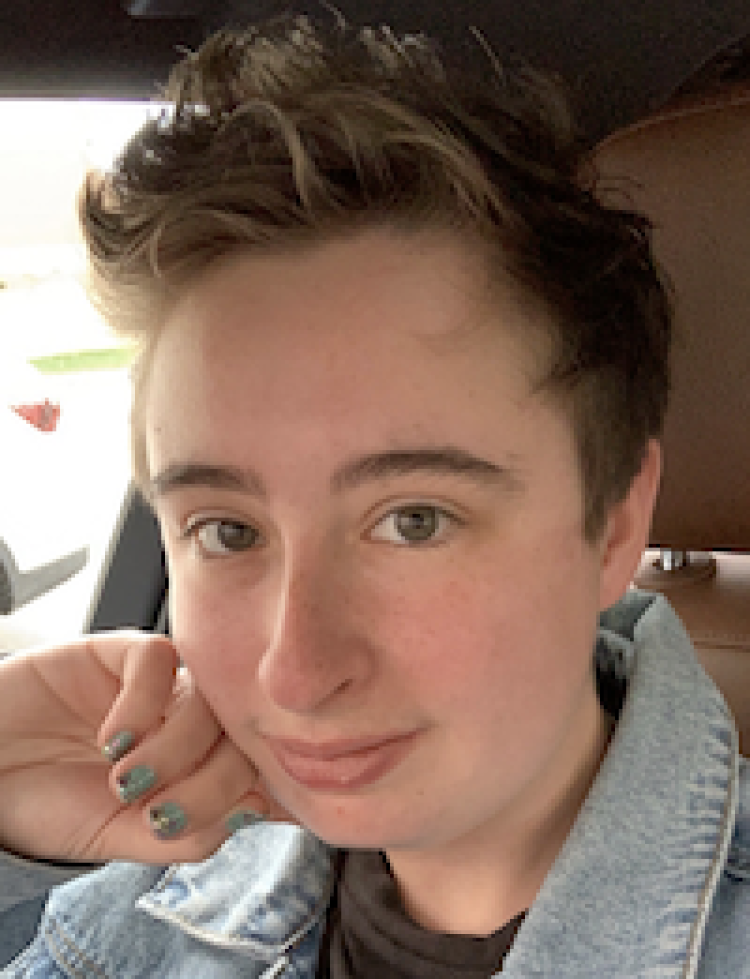International Transgender Day of Visibility
March 31 is International Transgender Day of Visibility, a day dedicated to celebrating transgender people and raising awareness about the discrimination they sometimes face.
On campus, the student group oSTEM @ CU Boulder provides a welcoming community for trans people and the broader LGBTQ+ community in science, technology, engineering and math fields. This week, oSTEM leaders shared thoughts about being STEM students and contributing to an inclusive environment in the College of Engineering and Applied Science.
Transgender is a broad term that can be used to describe people whose gender identity is different from the gender they were thought to be when they were born. “Trans” is often used as shorthand for transgender. - From Transequality.org
Arpi Grigorian is the event coordinator and past president of oSTEM @ CU Boulder. He is majoring in physics and math with a minor in creative writing and art. Grigorian says he is fascinated by cosmological problems, nurtured by his work as a student researcher for several years at the National Institute of Standards and Technology (NIST) in the Quantum Sensors Group. He has also received two Undergraduate Research Opportunity Program grants from CU Boulder to develop his science fiction project. His enthusiasm for his studies is matched only by his enthusiasm for building a strong oSTEM community through events, professional networking and outreach activities.
“Rather than creating just a social space, we really push toward bringing in a lot more trans-identified people to come speak, of which there is sort of a dearth,” he said. “It’s been a way to address some of the issues I kept encountering my first couple of years at CU. I don’t think I would have made it if I didn’t have this mission of wanting to put together events and help bring in speakers.”

Luca Bonarrigo
Luca Bonarrigo is a sophomore in aerospace engineering sciences and serves on the department’s Inclusive Culture Committee. Since he was a kid, he has dreamed about being an astronaut. After graduation, Bonarrigo plans to pursue a master’s degree in bioastronautics at CU and then go into aerospace research and human spaceflight operations.
“It would be great to be the first trans person to step foot on Mars,” said Bonarrigo, “or just the first person.”
When he’s not studying, he says he tries to entertain his creative side by drawing or working on the book he’s writing. Bonarrigo said he joined oSTEM because he wanted to meet other people in engineering who are like him. He currently serves as the secretary of the organization and next year will be the oSTEM president.
“Even at Boulder, at a school where they try to have increased diversity in their classes, sometimes it's hard to see yourself among your peers when you don’t really know you fit in,” said Bonarrigo. “(oSTEM) very quickly became a safe space for me to interact with other people, and to interact with staff and faculty as well, especially in the BOLD Center.”

Kade Eisen
Kade Eisen recently transferred from mechanical engineering into the creative technology and design program in the ATLAS Institute. A sophomore in the program, he says he loves the fabrication and design, the creative process and using his brain and project-based nature to design things that change the world for the better. In his free time, he experiments with Asian and Indian cooking — he's currently into spring rolls and curries. His plan is to become a project manager in the aerospace industry after graduation.
Eisen said he originally came to the college identifying as female and was active in the Society for Women Engineers. Once he realized he was male, he no longer felt comfortable being in SWE and started looking for other communities to join.
“One of the things I absolutely love about oSTEM,” said Eisen, “is just the sheer amount of resources you receive through the College of Engineering and the university itself.”
Eisen is the communications coordinator for oSTEM and will serve as vice president next year.
“When I came out as trans, I kept hearing over and over again job prospects aren't going to be good for you,” said Eisen. Through the speakers oSTEM brings in, he has made industry connections and discovered that many companies have Pride clubs. “That honestly made me so much more hopeful for my future,” he said.
Being part of the oSTEM community has helped Eisen cope with experiences of isolation and alienation that sometimes come up.
“I have been in classes where people would not want to interact with me or allow me to participate on their level because I’m the weird trans kid.” He has also experienced being misgendered by professors or mistakenly grouped with the wrong gender.
Bonarrigo echoed Eisen’s experience. His first year, he was frequently misgendered by peers and professors and says he found that invalidating.
“On top of that fact, a lot of the times you want to correct people, but it’s not that easy to speak up and say ‘well, actually…’,” said Bonarrigo. “It was nice when I had people around me who would correct others for me.”
Bonarrigo remembers one professor who started the first day of his class by introducing himself with his pronouns. “Immediately, I was like, OK, this is a safe space. I think it's something that is so easy that faculty members could do to help.”
Grigorian says a day like Trans Visibility Day is both a celebration and a good check on the community’s response. It’s an opportunity to encourage everyone to introduce themselves with their pronouns as a way of creating a welcoming and inclusive environment.
Grigorian will be graduating in May and has been active in oSTEM since 2016. In his time on campus, he has seen a lot of change.
“It’s been a ridiculous shift from when I first came out. It’s just like night and day. I feel like a lot of folks are educated about specifically trans issues and sort of come in with a more balanced experience. In human lifespan time, it's a very short period to have that total change and experience.”

